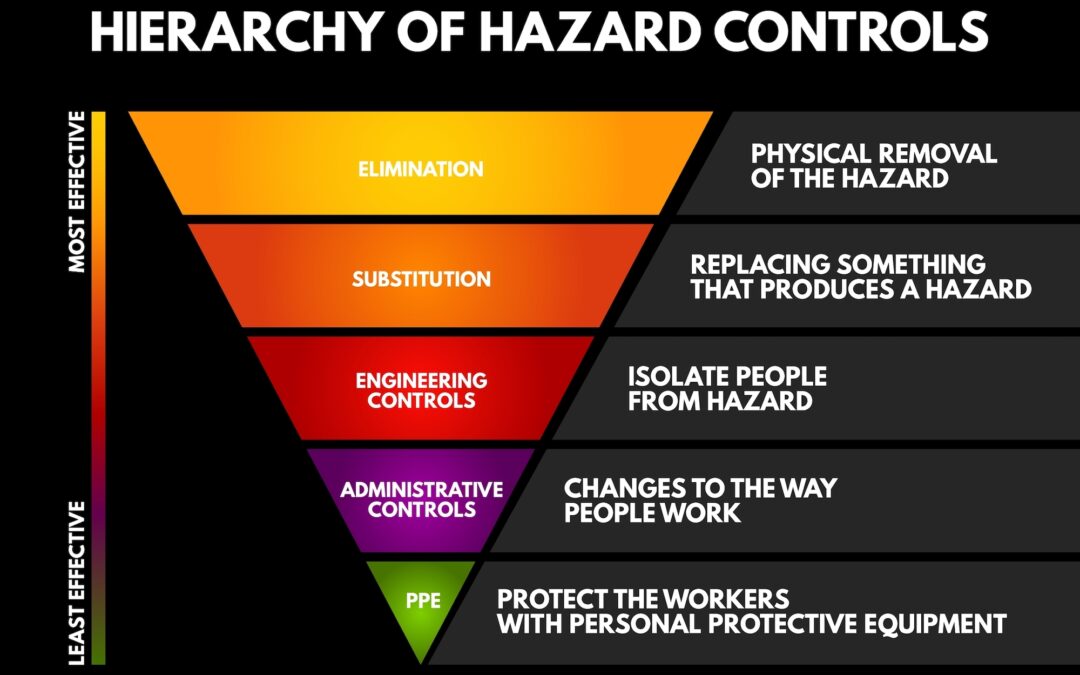Managing exposure to occupational hazards in the workplace is vital to protecting workers. Implementing the Hierarchy of Controls can be used to keep workers safe from work-related illnesses and injuries and is widely accepted by health and safety professionals. The Occupational Safety and Health Administration (OSHA), National Safety Council (NSC), and National Institute for Occupational Safety and Health (NIOSH) recommend this strategy to ensure safety in the workplace.
Discussion Points:
• What is the Hierarchy of Controls?
• What are control measures?
• What are the five levels of the Hierarchy?
• What is a hazard?
• What is risk?
Discussion:
The system of safety control measures, known as the Hierarchy of Controls, is used by many companies and industries to protect employees from work-related injuries and minimize hazards and risks. It includes five stages ranked by effectiveness from most to least and is represented using an inverted triangle graph; these stages include elimination, substitution, engineering controls, administrative controls, and personal protective equipment.
Elimination removes the hazard at the source and is the preferred method to protect workers because it involves no exposure to the worker. Substitution is using a safer alternative and reduces the potential for harmful effects, and does not create new risks. Engineering Controls prevent hazards from coming in contact with workers, including modifying equipment or the workspace using protective barriers, such as fencing or guardrails. Administrative Controls establish work practices that reduce the duration, frequency, or intensity of exposure to hazards, including job rotation or rest breaks. Personal protective equipment is worn to minimize
exposure, including hard hats, safety glasses, gloves, respirators, and hearing protection.
NIOSH recognizes the Hierarchy of Controls as a system protecting workers from danger and injuries and includes it as a strategy in the national initiative, Prevention through Design (PtD). It emphasizes employees’ health and safety throughout the life cycle of materials and processes. Many workplaces combine all of the methods of controls to ensure thorough protection; they use the Hierarchy of Controls in combination with a job hazard analysis to minimize hazards and risks for preventing accidents that result in injuries or fatalities.
As always, be safe out there!


Recent Comments